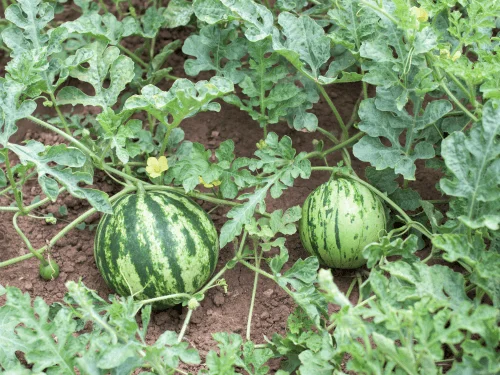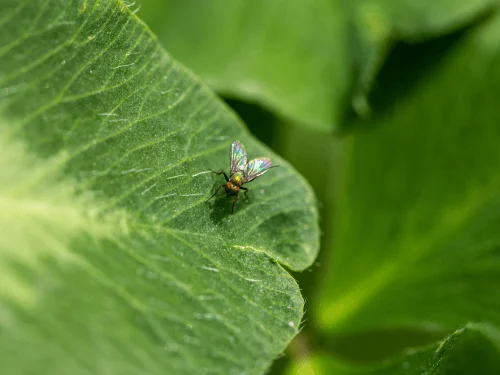10 Good Luck Plants to Bring Positive Energy and Harmony Into Your Home (Feng Shui Guide)
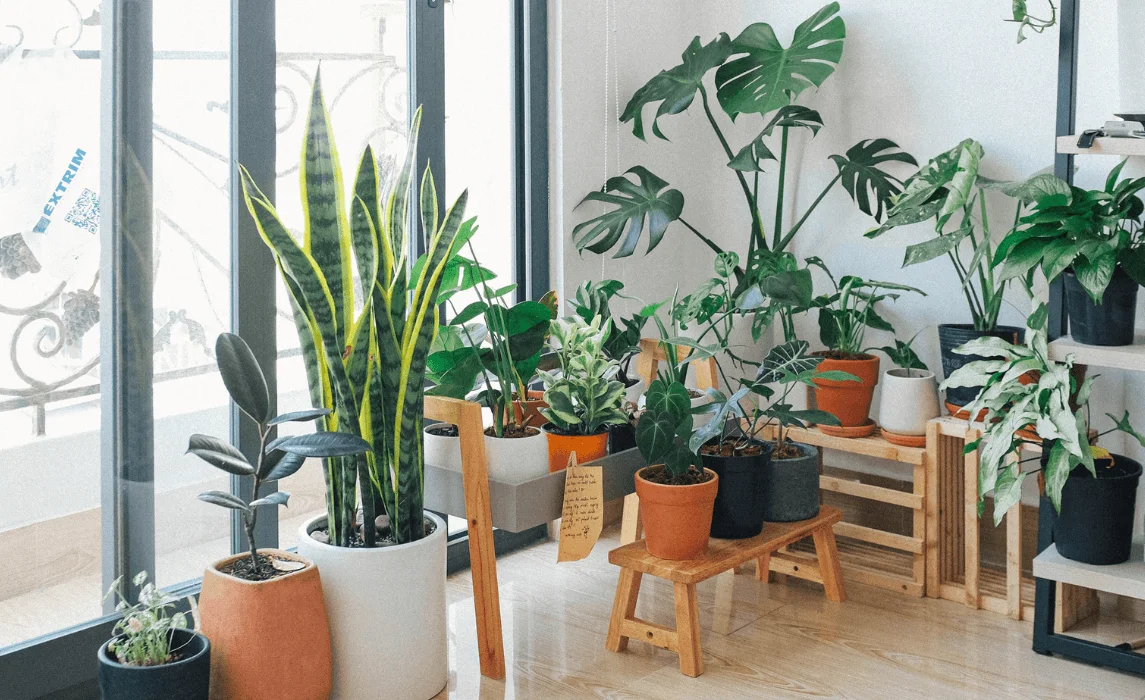
Q1: How long does it take to grow a watermelon?
Watermelon growing time varies by variety. Most watermelons take about 75–100 days from planting seeds to harvest. Seedless watermelons often take slightly longer. Starting seeds indoors can give you a head start, especially in shorter growing seasons.
Q2: Can I grow watermelon in a pot or container?
Yes! Small or icebox varieties like Sugar Baby grow well in large pots (15–20 gallons). Ensure the container has good drainage, is filled with fertile, well-draining soil, and gets full sun daily. Water frequently, as pots dry faster than garden beds, and provide a trellis or allow vines to trail over the sides.
Q3: Can watermelons grow in raised garden beds?
Absolutely! Raised garden beds are ideal because they warm up faster in spring and provide excellent drainage. Space plants well, enrich the soil with compost, and mulch around vines to maintain moisture and control weeds.
Q1: How can I identify common insects in my garden?
A: Look for signs such as holes in leaves, leaf miner damage, egg clusters, or wilting. Inspect the undersides of leaves, stems, and roots for adults and larvae of moths, sawfly, cabbage looper, tomato hornworm, and European corn borer.
Q2: What natural methods can control pests?
A: Encourage beneficial insects like ladybugs and parasitic wasps, handpick pests, squish caterpillars and slugs, prune infested leaves, and use DIY sprays like neem oil or spinosad. Row covers can also repel moths, sawfly, and cabbage white.
Q3: How can I prevent pests in my garden?
A: Maintain garden hygiene, remove debris, rotate crops, use companion planting, encourage beneficial insects, and inspect leaves and roots for early damage. Row covers and DIY sprays also help prevent infestations.
Q4: How do pests cause plant diseases?
A: Pests spread blight and bacterial wilt through feeding wounds. Early identification, removing infested plants, natural pest control, and healthy soil help minimize disease.
1. Can I grow fruit trees in small gardens or pots?
Yes! Many dwarf fruit trees and container-friendly varieties are perfect for small gardens or patios. Trees in pots can include citrus trees, figs, and dwarf apple trees. Using containers allows you to control soil, water, and temperature more easily, making it possible to grow fruit even in northern climates. These trees are especially useful if you want fast-growing trees that produce fruit within a few years and don’t require a large orchard space.
2. What climate is best for fruit trees?
The climate plays a major role in fruit production. Cold-hardy trees like apples, pears, and plums survive in northern regions, including zone 3, while citrus trees, figs, and peaches thrive in warmer southern areas like Florida or Virginia. Some fruit trees may require protection from frost, while others can tolerate cold winters. Understanding your USDA zone and local conditions ensures your trees will grow healthy and produce fresh fruit consistently.
3. Where can I buy fruit trees online?
Many growers offer fruit trees for sale online, including bare root trees, grafted trees, and container-grown trees. Buying fruit trees online allows you to select from a wide range of fruit tree varieties suitable for your climate, including apples, pears, peaches, plums, citrus trees, and more. When purchasing, check for USDA zone compatibility, tree size, and health guarantees to ensure you receive a quality tree that will thrive in your garden.
10 Good Luck Plants to Bring Positive Energy and Harmony Into Your Home
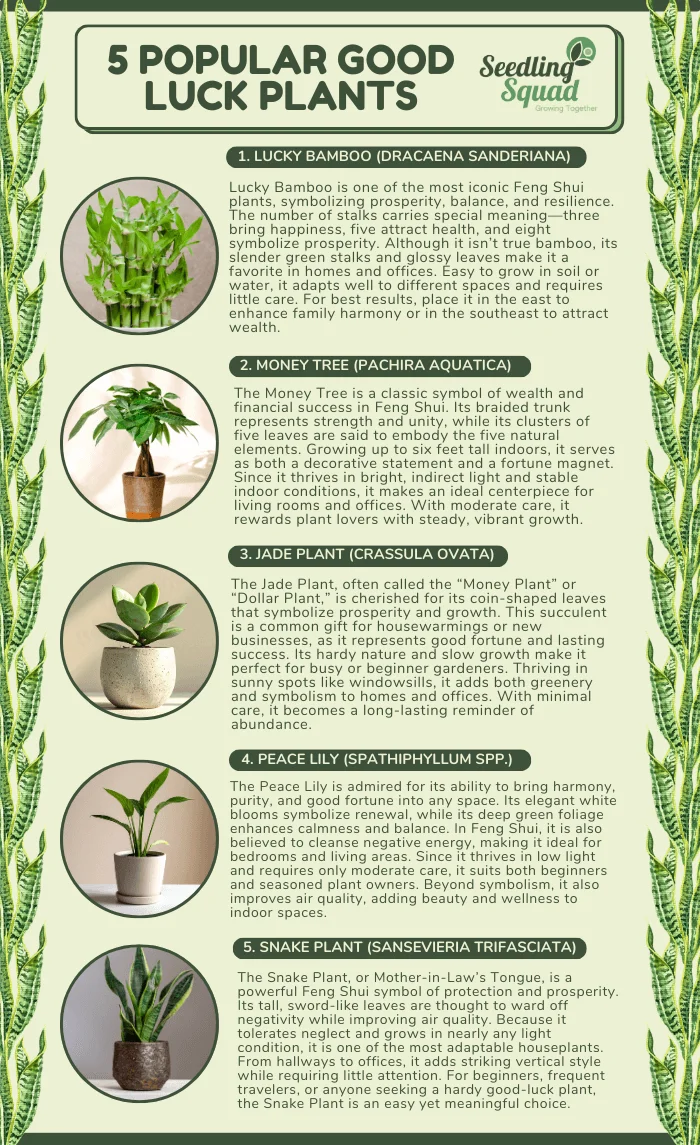
Looking to fill your living space with more than just greenery? In Feng Shui, certain plants are believed to attract good fortune, prosperity, and positive energy while creating a sense of balance and harmony in your home. Beyond their natural beauty, these so-called “good luck plants” symbolize growth, renewal, and abundance, making them powerful additions to any room. Whether you’re hoping to invite wealth with a money tree, strengthen family bonds with a jade plant, or simply create a calming atmosphere, the right plant can help transform your space into a sanctuary of good energy. In this guide, we’ll explore 10 good luck plants and share how to care for them so they thrive while bringing harmony, prosperity, and joy into your home.
10 Plants for Good Luck
1. Lucky Bamboo (Dracaena sanderiana)
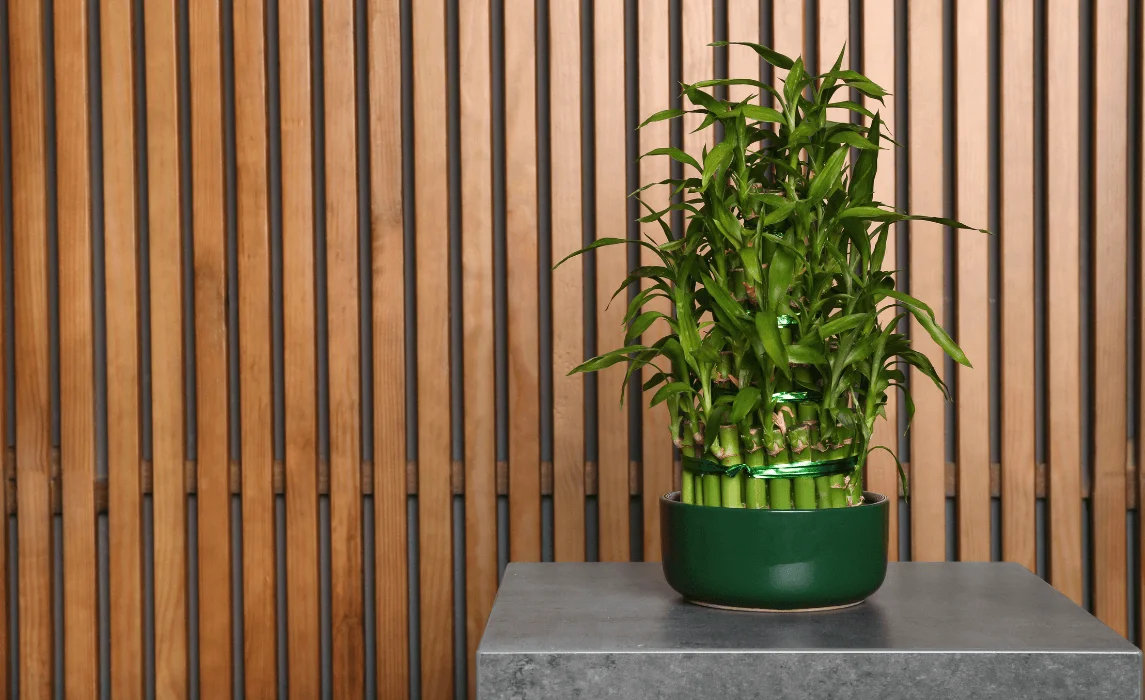
Lucky Bamboo is one of the most iconic good-luck plants, symbolizing prosperity, resilience, and balance in Feng Shui. The number of stalks holds special meaning—three bring happiness, wealth, and longevity, five attract health, and eight symbolize prosperity. Despite its name, it isn’t true bamboo but a Dracaena with slender, green stalks that can be straight or shaped into spirals and braids, topped with glossy green leaves. It thrives indoors, especially in offices and homes, and is often placed in the east for family harmony or southeast for wealth. It can grow in soil or water, making it adaptable and easy to care for. Regular water changes, indirect light, and mild fertilization keep it healthy. This plant is perfect for beginners or busy individuals who want a low-maintenance plant that also adds charm and positive energy.
Soil: Well-draining potting mix or water with pebbles
Water: Weekly refresh if in water; keep soil moist
Light: Bright, indirect light
Humidity: Average indoor humidity
Fertilizer: Mild liquid feed every 6–8 weeks
Temperature: 65–90°F (18–32°C)
USDA Zone: 10–11
2. Money Tree (Pachira aquatica)
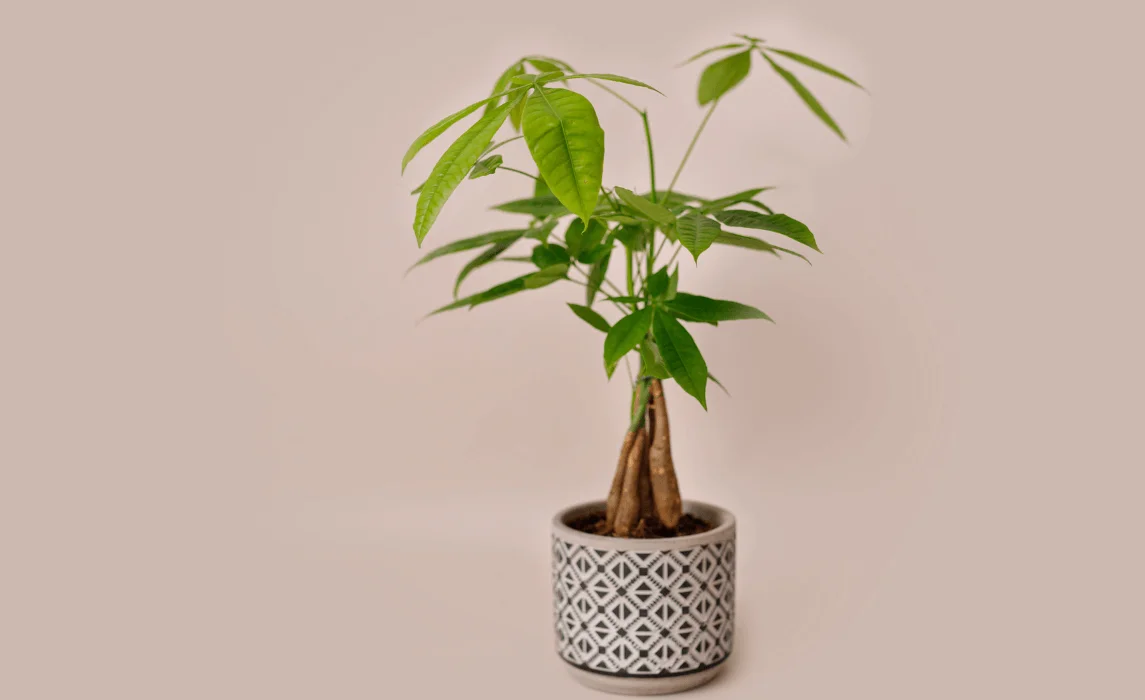
The Money Tree is a popular Feng Shui plant believed to attract wealth and financial success, especially when placed in living rooms or offices. Its braided trunk symbolizes interconnectedness and strength, while its glossy green leaves—often growing in clusters of five—are thought to represent the five natural elements. This tropical tree can grow up to six feet indoors, making it both a decorative statement and a fortune magnet. It thrives in bright, indirect light and prefers a stable indoor environment with moderate humidity. To keep it healthy, allow the soil to dry slightly between waterings to avoid root rot. Fertilize monthly during the growing season for vibrant growth. It’s perfect for intermediate gardeners who enjoy larger indoor plants and want a symbolic centerpiece that radiates positive energy while being relatively easy to maintain.
Soil: Well-draining, peat-based mix
Water: Every 1–2 weeks; avoid soggy soil
Light: Bright, indirect light
Humidity: Moderate
Fertilizer: Monthly during spring and summer
Temperature: 60–75°F (15–24°C)
USDA Zone: 10–12
3. Jade Plant (Crassula ovata)
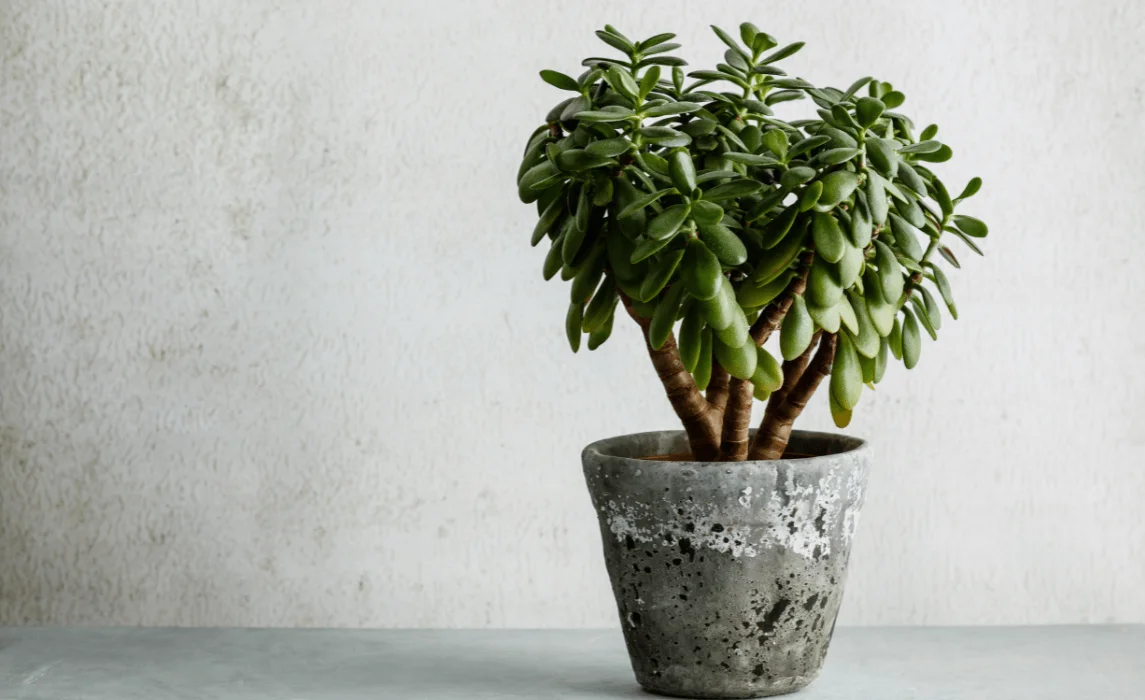
The Jade Plant, also known as the “Money Plant” or “Dollar Plant,” is a succulent that has long been associated with prosperity and wealth, making it a common housewarming or business-opening gift. With its thick, round, coin-shaped leaves that gleam a deep green, sometimes tinged with red edges, it perfectly symbolizes financial luck and growth. This hardy succulent can reach up to three feet tall and thrives on windowsills or sunny spots, especially in offices or living rooms where natural light is abundant. It thrives in dry conditions and needs minimal care—just water sparingly when the soil dries out completely, as overwatering can harm it. Its slow growth and resilience make it an excellent plant for beginner gardeners or those who prefer low-maintenance indoor greenery. For many, the Jade Plant is both a lucky charm and a beautiful, enduring companion.
Soil: Cactus or succulent mix
Water: Every 2–3 weeks; let soil dry out
Light: Bright, direct sunlight
Humidity: Low to average
Fertilizer: Twice yearly with succulent fertilizer
Temperature: 55–75°F (13–24°C)
USDA Zone: 10–11
4. Peace Lily (Spathiphyllum spp.)
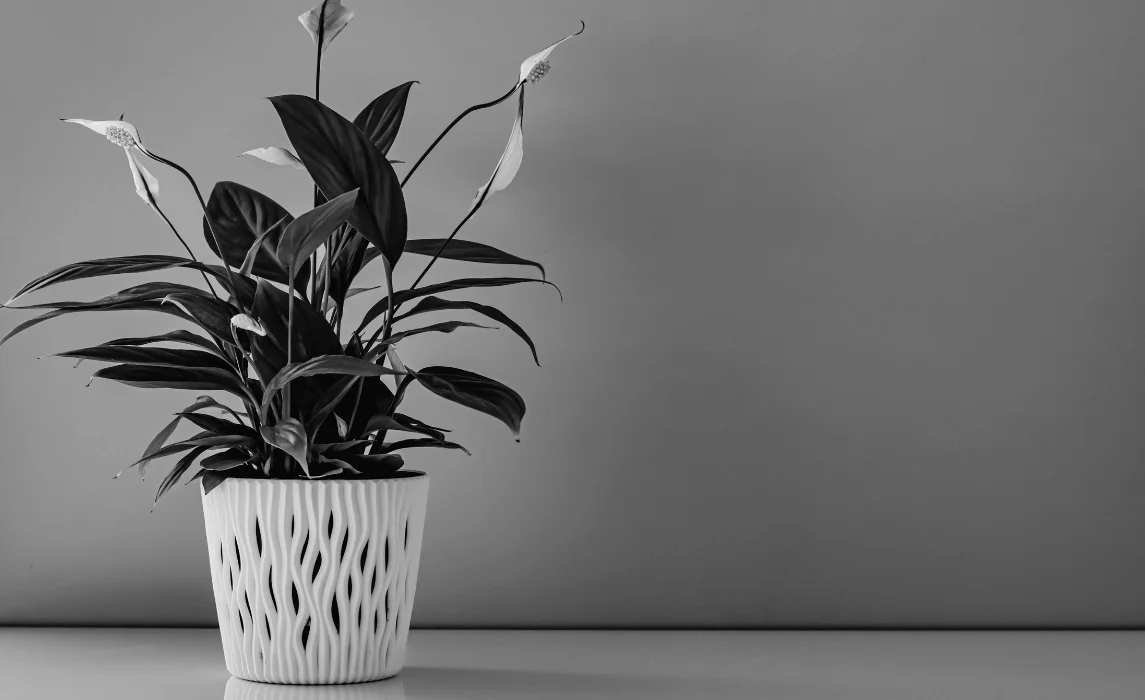
Peace Lilies are elegant indoor plants associated with harmony, peace, and good fortune. In Feng Shui, they are believed to cleanse negative energy and promote spiritual well-being, making them ideal for bedrooms and living spaces. Their striking white blooms, shaped like teardrops, stand gracefully against deep green foliage, symbolizing purity and renewal. These compact yet lush plants thrive in shaded indoor environments, perfect for low-light apartments or offices. They prefer consistently moist soil but should not be waterlogged. Wiping the leaves occasionally helps them breathe and prevents dust buildup. Peace Lilies are forgiving plants, ideal for beginners or those with limited natural light at home. Their air-purifying qualities, beauty, and symbolism make them one of the most recommended good-luck plants for improving both energy flow and interior aesthetics.
Soil: Well-draining, rich potting mix
Water: Keep soil evenly moist
Light: Low to medium, indirect light
Humidity: Moderate to high
Fertilizer: Every 6–8 weeks in spring/summer
Temperature: 65–80°F (18–27°C)
USDA Zone: 10–11
5. Snake Plant (Sansevieria trifasciata)
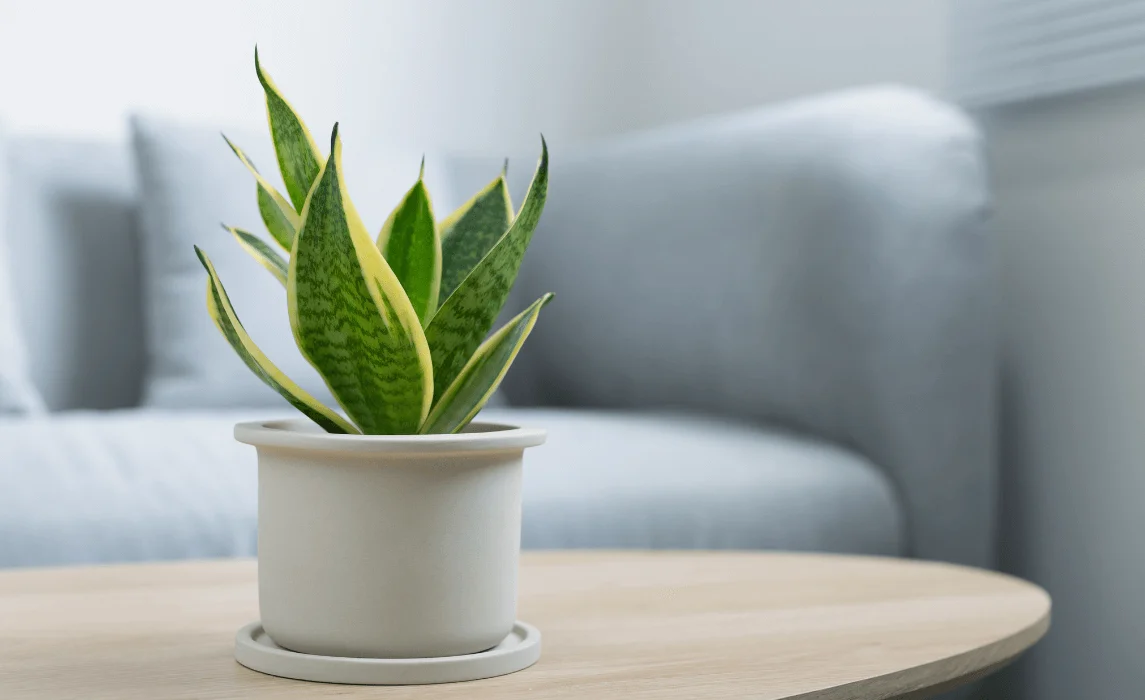
The Snake Plant, also known as Mother-in-Law’s Tongue, is a symbol of protection and good fortune, especially in Feng Shui, where it’s said to ward off negative energies and improve indoor air quality. With its tall, sword-like leaves that are stiff, upright, and variegated in green, yellow, or silver patterns, it adds striking vertical interest to interiors. Snake Plants thrive almost anywhere, from dimly lit corners to sunny windows, making them one of the most adaptable houseplants. They store water in their leaves, so they require minimal watering and tolerate neglect well. This durability makes them perfect for busy individuals, travelers, or new plant parents who want greenery without high maintenance. Compact or tall varieties fit perfectly in offices, hallways, or living rooms, where they provide both style and symbolic protection.
Soil: Sandy, well-draining mix
Water: Every 2–3 weeks; let soil dry
Light: Low to bright, indirect light
Humidity: Low to average
Fertilizer: Light feed once per season
Temperature: 55–85°F (13–29°C)
USDA Zone: 9–11
6. Orchids (Orchidaceae family)
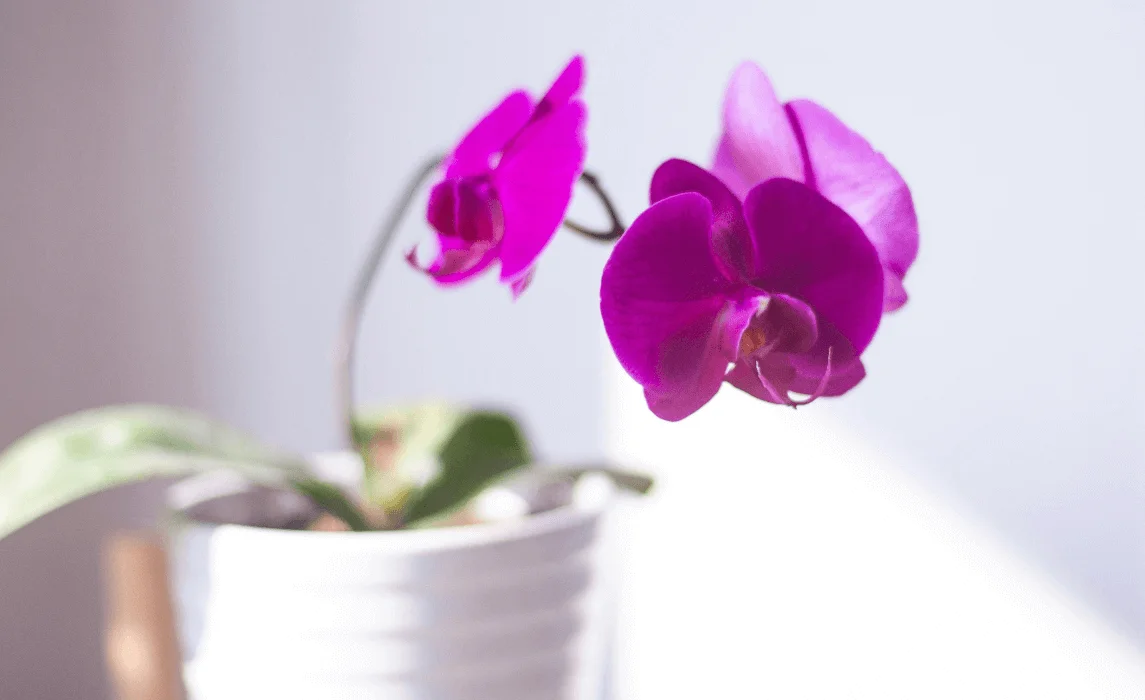
Orchids have long been associated with love, fertility, and prosperity, often given as gifts for weddings or new beginnings. In Feng Shui, they represent beauty, refinement, and positive relationships. Their graceful, arching stems adorned with delicate blooms in white, purple, pink, or yellow create an elegant and luxurious display. Orchids thrive best in bright, indirect light and prefer humid environments, making them perfect for bathrooms, kitchens, or sunny living rooms. They grow in orchid-specific bark-based media rather than soil, which allows their roots to breathe. Watering once a week and providing proper drainage are key to keeping them healthy. Though they require slightly more attention than other plants, they reward their caretakers with stunning flowers that can last for weeks. Orchids suit intermediate gardeners who enjoy tending to detail and appreciate plants that bring both luck and elegance to their homes.
Soil: Orchid bark mix
Water: Once a week; avoid standing water
Light: Bright, indirect light
Humidity: Moderate to high
Fertilizer: Every 2 weeks during growth
Temperature: 60–80°F (16–27°C)
USDA Zone: 10–12
7. Rubber Plant (Ficus elastica)
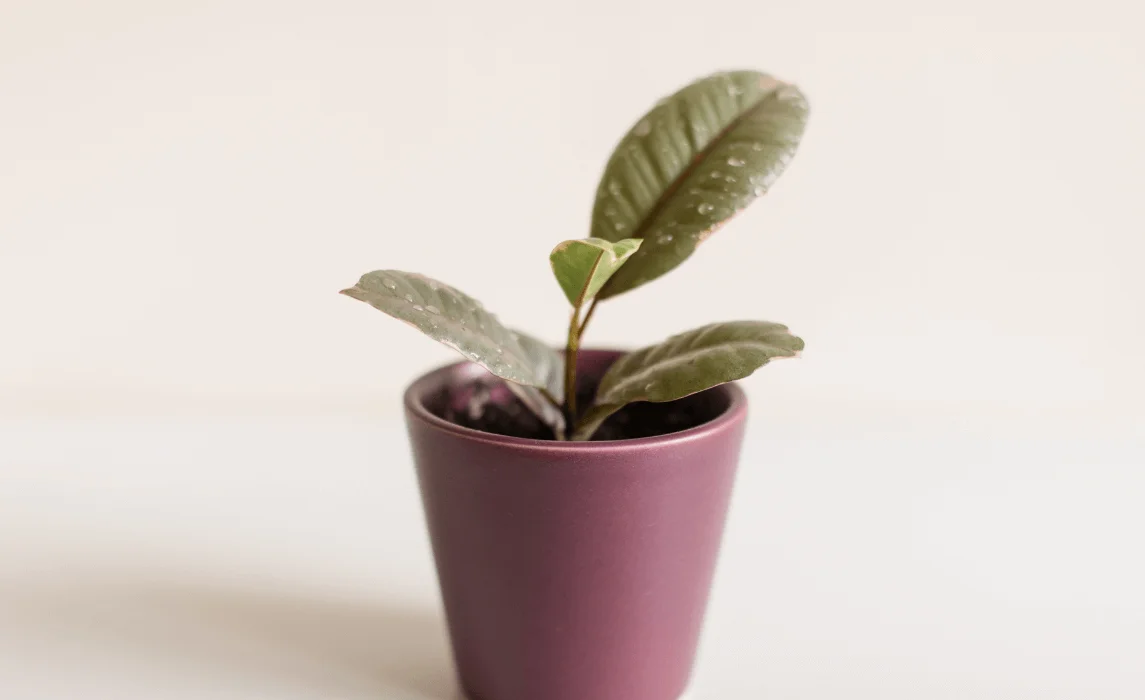
The Rubber Plant is a bold, luck-bringing plant often linked with abundance and wealth. Its large, glossy, oval leaves in deep green or burgundy symbolize vitality and continuous growth, making it popular in Feng Shui for attracting prosperity when placed in living rooms or offices. Indoors, it can grow to impressive heights of six to ten feet, serving as a striking decorative centerpiece. Rubber Plants thrive in bright, indirect light but can also tolerate moderate shade. They prefer their soil to dry slightly between waterings and benefit from occasional leaf wiping to maintain their sheen. Fertilizing monthly during the growing season encourages lush growth. Because of their larger size, Rubber Plants are recommended for intermediate gardeners or plant lovers with spacious rooms who want a statement plant that also doubles as a symbol of good fortune.
Soil: Well-draining, loamy mix
Water: Every 1–2 weeks; let topsoil dry
Light: Bright, indirect light
Humidity: Average indoor humidity
Fertilizer: Monthly in spring and summer
Temperature: 60–75°F (15–24°C)
USDA Zone: 10–12
8. Basil (Ocimum basilicum)
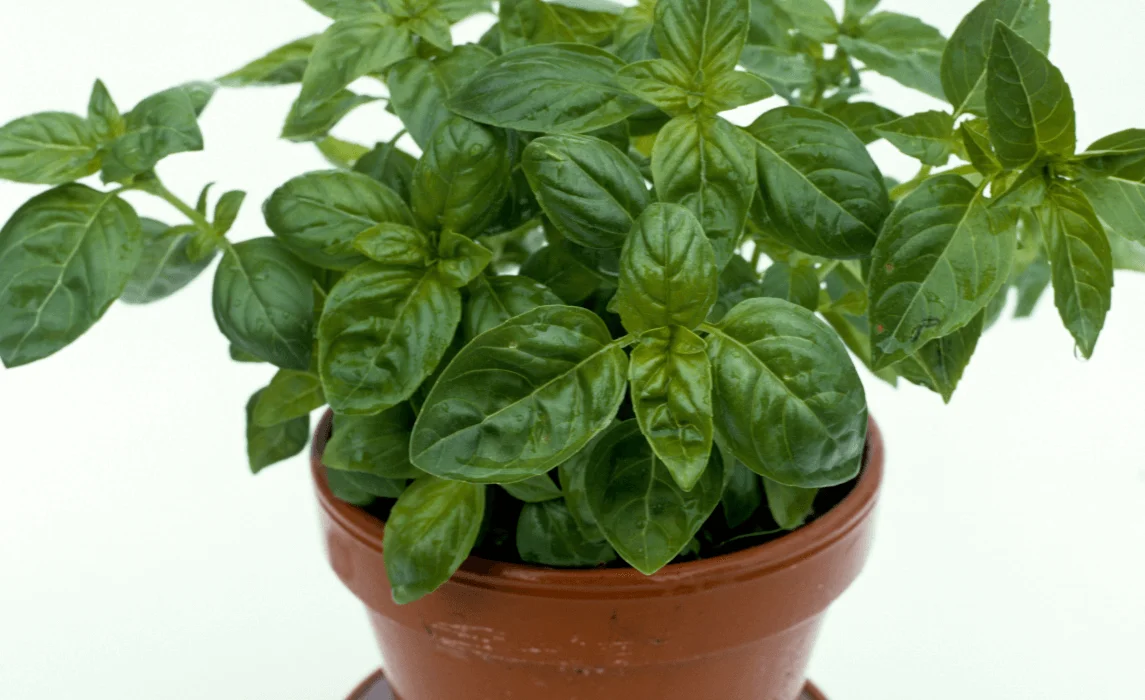
Basil is more than just a culinary herb—it has deep symbolic meaning in many cultures, representing luck, protection, and prosperity. In some traditions, it’s believed to attract love and ward off negative energy, making it a powerful good-luck plant to keep at home. Basil grows into a small, bushy herb with bright green, aromatic leaves that release a refreshing fragrance when touched. It thrives in sunny kitchens, gardens, or patios where it can receive at least six hours of sunlight daily. Regular watering and well-drained soil are essential for its lush growth. Basil is best suited for gardeners who enjoy combining practical use with symbolism, as it offers both flavor for the kitchen and spiritual benefits. It’s perfect for home cooks, beginners, or anyone who wants an accessible plant that brings freshness and good luck.
Soil: Well-draining, nutrient-rich mix
Water: Regularly; keep soil slightly moist
Light: Full sun (6+ hours)
Humidity: Average to moderate
Fertilizer: Every 4–6 weeks during growth
Temperature: 65–85°F (18–29°C)
USDA Zone: 10–11
9. Chrysanthemum (Chrysanthemum spp.)
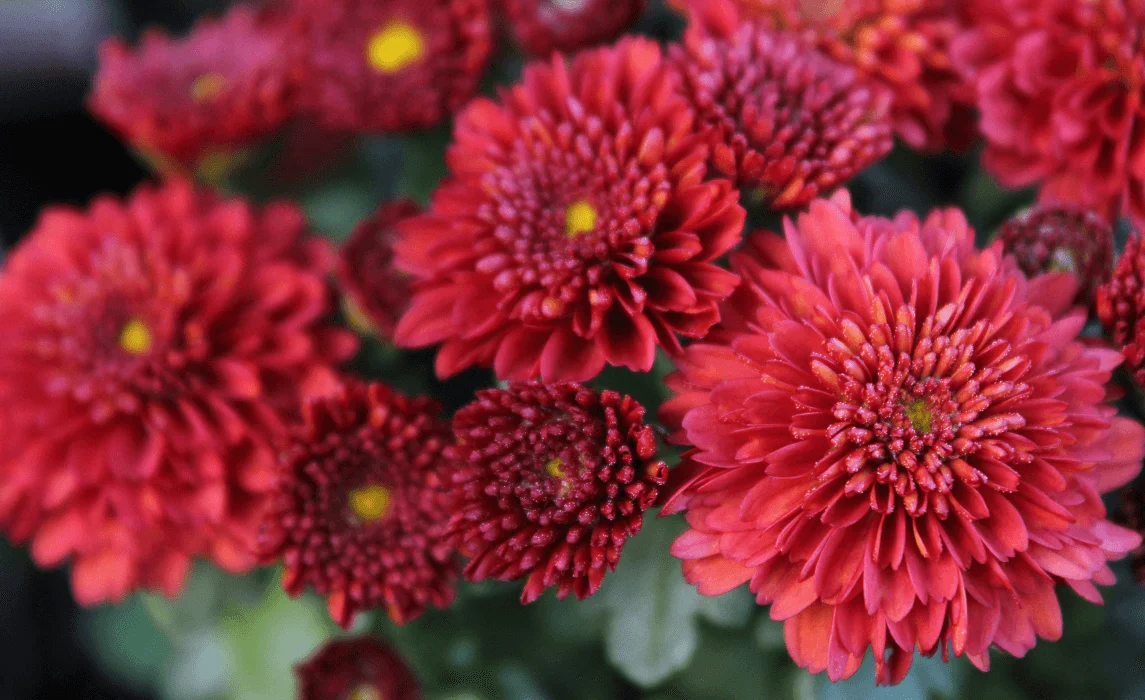
Chrysanthemums are revered in many cultures as symbols of longevity, joy, and good fortune. In Feng Shui, they represent happiness and a life of ease, making them excellent plants for brightening homes and workspaces. With their wide variety of vibrant blooms—ranging from yellow and red to pink and white—they bring color, energy, and positivity to any environment. Chrysanthemums thrive outdoors in sunny gardens but can also be grown in containers indoors near bright windows. They prefer well-draining soil and consistent moisture, though overwatering should be avoided. Deadheading spent flowers encourages longer blooming periods. These cheerful plants are recommended for gardeners who love ornamental flowers and want to cultivate a lively, luck-filled space. Chrysanthemums are especially popular as seasonal decorations, adding beauty and symbolic prosperity wherever they grow.
Soil: Well-draining garden soil
Water: Keep soil moist; avoid soggy roots
Light: Full sun
Humidity: Average outdoor levels
Fertilizer: Every 2 weeks in growing season
Temperature: 60–70°F (15–21°C)
USDA Zone: 5–9
10. Bamboo Palm (Chamaedorea seifrizii)
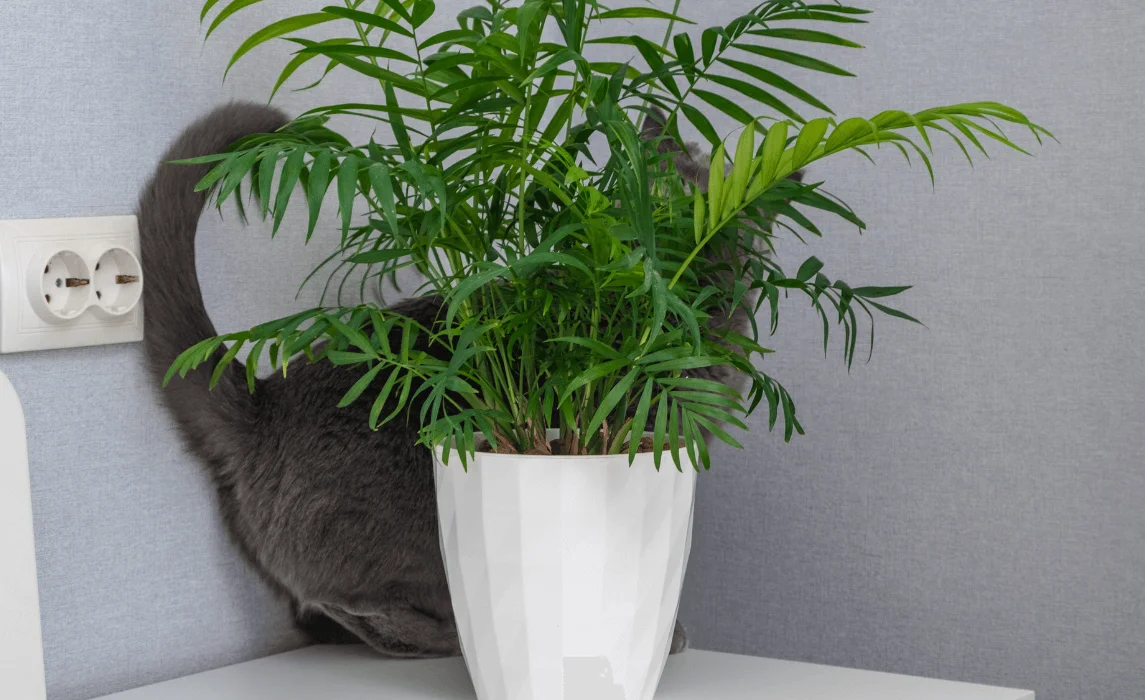
The Bamboo Palm is a lush indoor plant associated with good fortune, peace, and positive energy flow. Its elegant, feathery fronds resemble bamboo, giving it a graceful appearance that complements interiors beautifully. Symbolically, it is believed to attract wealth and improve the flow of chi in homes and offices. Growing up to seven feet tall indoors, it thrives in bright but indirect light, though it also tolerates lower light conditions. This palm prefers slightly moist soil and higher humidity, making it an excellent choice for bathrooms or humid rooms. Fertilizing every two months during the growing season ensures healthy growth. With its easygoing nature, the Bamboo Palm is ideal for beginner to intermediate gardeners who want an attractive, air-purifying plant that also brings luck and tranquility into their space.
Soil: Well-draining, peat-based mix
Water: Keep soil lightly moist
Light: Bright, indirect light
Humidity: Moderate to high
Fertilizer: Every 2 months in growing season
Temperature: 65–80°F (18–27°C)
USDA Zone: 10–11
Frequently Asked Questions:
1. What makes a plant a “good luck” plant?
A good luck plant is any house plant believed to bring good fortune, prosperity, or protection. In many traditions, plants are known to bring balance and positive energy into spaces, with certain species like the Money Tree plant, Chinese Money Plant, or Lucky Bamboo plant considered symbols of good luck. Feng Shui practitioners often recommend these plants to attract money, love, and good fortune, especially when they are placed in the home or office in specific directions.
2. Which plants are best to attract money and prosperity?
Popular plants to attract money include the Money Tree plant, Chinese Money Plant, Jade Plant, and Pothos plants. These are often referred to as Feng Shui plants to attract wealth and good luck. Among the best Feng Shui plants, Lucky Bamboo (especially lucky bamboo 6 stalks), Jade, and Money Trees are known to bring prosperity and good luck.
3. Can Feng Shui really help plants bring good energy?
Yes, Feng Shui can be translated as the “way of wind and water,” and Feng Shui lucky plants are believed to bring balance and energy flow indoors. Chinese Feng Shui emphasizes placing plants in your home in areas that welcome good chi (energy). Popular plants like Lucky Bamboo, Money Tree, and Pothos plants are best used as Feng Shui indoor plants to attract wealth and good luck to your home.
4. Which good luck plant is best for home décor?
Peace Lilies, Orchids, and Bamboo Palms are excellent for home décor because they combine beauty with symbolic meaning. These plants are associated with luck and believed to bring peace, harmony, and prosperity. For a plant that symbolizes good fortune and enhances home décor, Money Trees and Chinese Money Plants are also excellent choices.
5. What’s a good plant for housewarming gifts?
Plants like Lucky Bamboo, the Money Tree plant, and Orchids are traditional housewarming gift options because they are believed to bring good luck to your home and symbolize wealth, love, and good fortune. They’re also easy-to-grow plants that add good luck and positive energy when placed in the home.



.webp)

